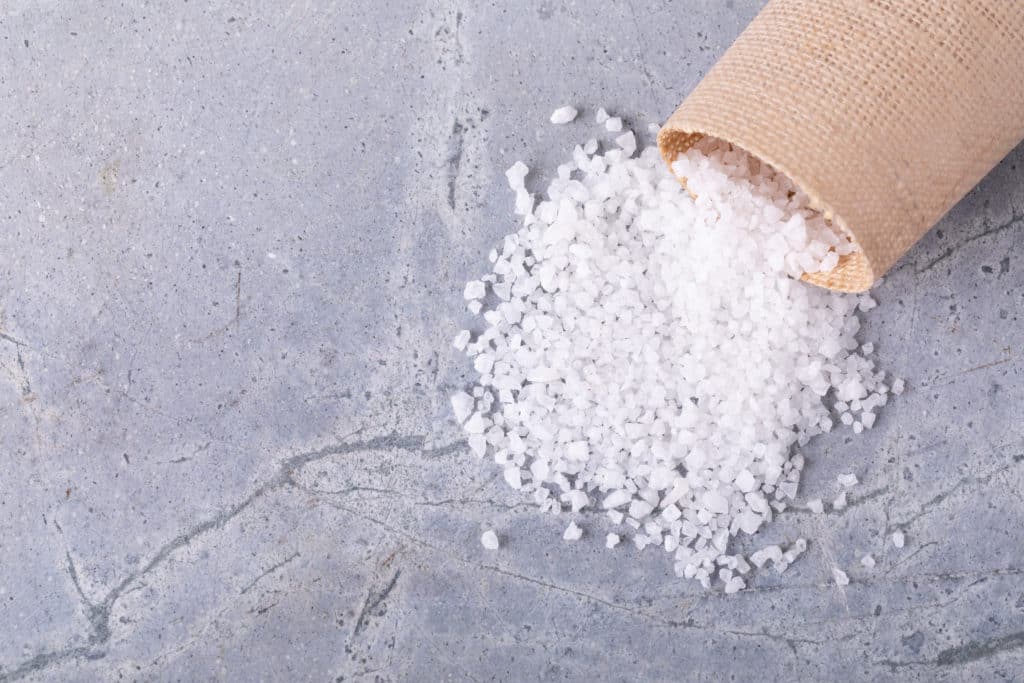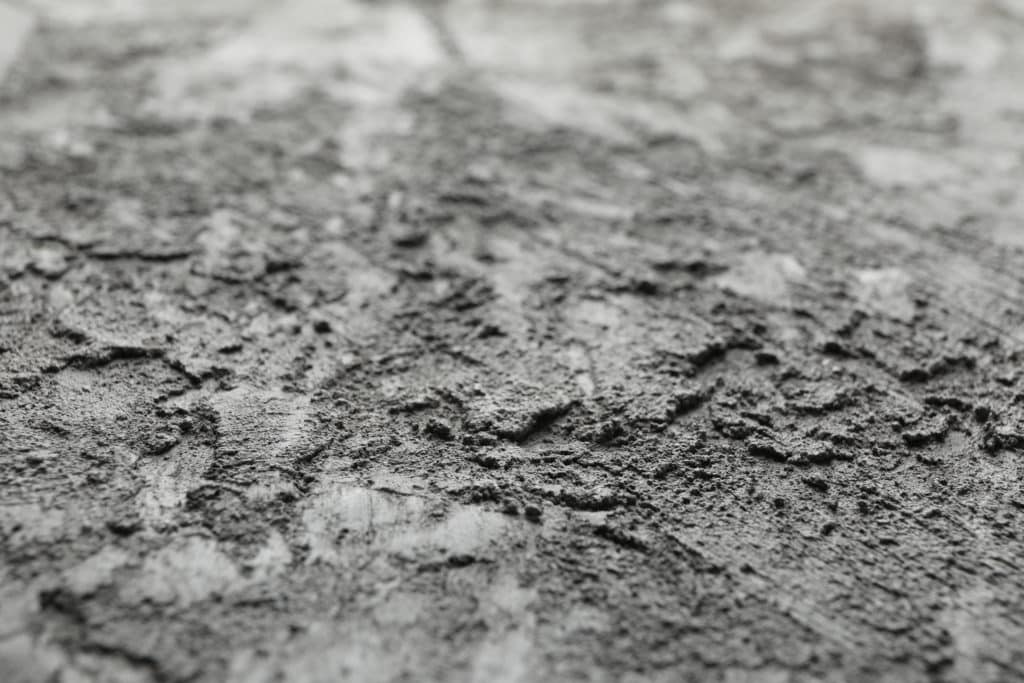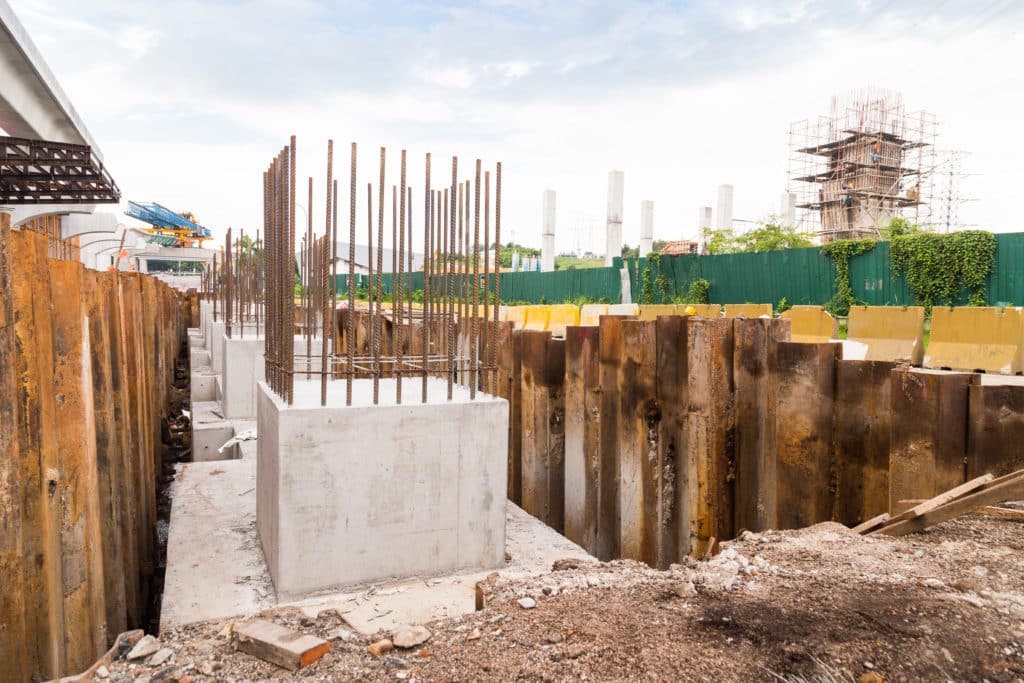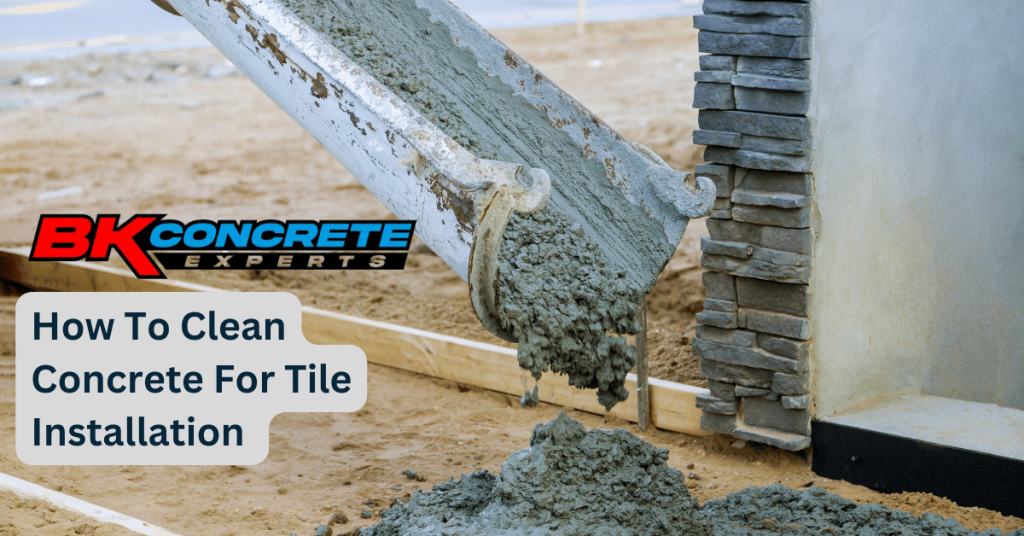Salt’s interaction with concrete is a subject of both practical relevance and scientific interest. While common rock salt or sodium chloride is often used to manage icy conditions on roadways and pavements, it may lead to complications in the integrity of concrete structures over time. Salt does not directly chemically react with hardened concrete, but it contributes to processes that can accelerate damage. Specifically, salt lowers the freezing point of water and attracts moisture, which can lead to an increased pressure of frozen water within the concrete. This phenomenon can result in cycles of freezing and thawing that eventually compromise the surface of the concrete.
Concrete is a durable and robust material, widely used in construction due to its strength and longevity. However, its porous nature makes it vulnerable to the ingress of water and chemicals, including salts used as deicers. These salts can cause surface erosion, flaking, cracking, and other forms of deterioration if not properly managed. In colder climates, the risk of salt damage to concrete is particularly of concern as the use of deicing salts is more frequent.
To prevent damage, maintenance and protective measures must be implemented, especially in areas subject to harsh winter conditions. Understanding how salt interacts with concrete is crucial for maintenance personnel, property owners, and municipalities to make informed decisions about the materials used for deicing and the methods employed to protect concrete infrastructure. The effects of salts are a significant factor in the lifespan of concrete, and effective strategies to counteract these effects can enhance the durability and safety of concrete surfaces.
The Science of Salts and Concrete

In understanding how salt affects concrete, it’s crucial to address both the chemical interactions and the physical damage that salt can cause over time.
Chemical Effects of Salt on Concrete
When salt, particularly sodium chloride (NaCl) or calcium chloride (CaCl2), comes into contact with concrete, it alters the pH of the moisture within the concrete. Chloride ions from the salt can penetrate the porous structure, leading to a series of chemical reactions. For instance, magnesium chloride and other salts can react with the calcium hydroxide in concrete to form compounds that are more soluble in water and can leach out, potentially leading to deterioration of the concrete matrix. This process can be exacerbated by repeated exposure, causing spalling and scaling—where the surface layer begins to flake off, and pitting—deeper, more localized areas of damage.
Physical Impact on Concrete Structure
The physical damage induced by salt often stems from the freeze-thaw cycles that the trapped salt-laden water undergoes. As water enriched with salt seeps into the concrete pores, it may freeze with a drop in temperature. When this occurs, the volume expansion exerts considerable pressure on the surrounding concrete. Over time, with continuous expansion and contraction, this can lead to micro-sized cracks that eventually grow and coalesce, weakening the integrity of the concrete. Furthermore, the presence of salt can lead to a decrease in the freeze-thaw resistance of concrete, promoting the accumulation of aggregate and cracks in the structure.
Environmental Factors Affecting Concrete Damage

Several environmental factors play a significant role in the deterioration of concrete structures, with temperature variations and water being the primary culprits. These elements contribute to the freeze-thaw cycles that significantly damage concrete surfaces.
Role of Temperature and Weather
Temperature fluctuations during the winter months can lead to a pattern known as the freeze-thaw cycle. When the mercury dips below the freezing point, the water trapped in concrete pores freezes and expands, leading to stress within the material. Upon thawing, this creates space for more water to seep in, only to freeze and expand again with each cycle. This continuous process can cause surface scaling and cracking, exacerbating the salt damage to concrete.
Water Interaction and Concrete Damage
The interaction between water and concrete is a pivotal factor in the material’s degradation. Rain and moisture infiltrate concrete through its porous surface, which can be particularly detrimental when combined with salts used for de-icing. These salts contribute to an increased number of freeze-thaw cycles by lowering the freezing point of water, thus accelerating salt damage to concrete surfaces. Moreover, during periods of freeze/thaw cycle, the integrity of concrete can become jeopardized as water expands and contracts, leading to pitting and scaling.
Protection and Maintenance of Concrete Surfaces
Proper maintenance and the application of effective sealing solutions are fundamental to prolonging the life and appearance of concrete surfaces. By adhering to recommended maintenance practices and using quality sealers, concrete can be protected from common issues like salt damage.
Best Practices for Concrete Maintenance
Regular maintenance practices are crucial for the longevity of concrete surfaces. First and foremost, it is essential to clean concrete periodically to remove harmful substances including salts, especially after periods of snow and icy conditions.
- Cleaning: Remove debris and then scrub away salt residue with a mild, non-damaging cleaning solution.
- Inspection: Regularly inspect for cracks or signs of wear.
- Prompt Repair: Address cracks or damage promptly with a suitable concrete repair compound to prevent water infiltration.
The proper maintenance of new concrete is also important. Keeping new surfaces damp for several days post-application aids in the curing process and adds to their resilience.
Effective Sealing Solutions
Choosing the right sealer is a pivotal step in protecting concrete from the elements, including salt-related damage. A high-quality concrete sealer often doubles as a water repellent, providing a strong defense against moisture penetration.
- Penetrating Sealers: These sealers infiltrate the surface to create a protective barrier without changing the concrete’s appearance.
- Film-Forming Sealers: Best for providing shine or enhancing the color of decorative concrete while offering protection.
- Acrylics: Easy to apply and economical, but reapplication is required more frequently.
- Polyurethanes and Epoxies: They are thicker and offer greater protection, but can be more expensive and require professional application.
It is critical that the chosen sealer should be appropriate for the concrete’s environmental exposure and usage to ensure its effectiveness in safeguarding the surface.
Alternatives to Salt for De-Icing
Seeking out alternatives to traditional de-icing salts is crucial for protecting concrete surfaces from damage and ensuring pet safety. In this section, we will explore safer chemical options and natural methods for ice removal, as well as protective measures that can help prevent damage to concrete.
Safer De-Icing Chemicals and Natural Methods
Instead of harmful salts, individuals and municipalities might consider other chemical ice melters like calcium chloride, which works effectively even in low temperatures and is less damaging to concrete. This ice melter is also less harmful to plants and animal paws compared to traditional rock salt.
Another option is magnesium chloride, known for its lower risk of harming concrete and vegetation, and offering enhanced pet safety when compared to sodium chloride-based products.
Natural methods to prevent ice include the use of sand. While it doesn’t melt ice, it provides traction and is inert, meaning it doesn’t instigate the freeze-thaw cycling that damages concrete surfaces.
Protective Measures and Substances
Water repellent sealers can be applied to concrete to prevent the absorption of water and ice formation. These sealers create a protective layer, minimizing the risk of freeze-thaw cycles that cause cracking.
Application of safe oil-based products can also minimize the adherence of ice to concrete, but these should be chosen carefully to avoid creating slippery surfaces or environmental harm.
Investing in rust-proofing agents for any embedded metal, like rebar, within concrete structures can prevent salt-induced rusting, which can also contribute to concrete deterioration.
Understanding Salt’s Effect on Concrete Durability
Salt damage to concrete surfaces is a significant concern in regions that experience harsh winters. Deicing salts, commonly used to prevent ice formation, can lead to a reduction in the durability and integrity of concrete. Salt induces a chemical reaction when it dissolves in water, forming a brine that lowers the freezing point of water. This brine can seep into concrete and, as temperatures fluctuate, induce freeze-thaw cycles.
| Consequence | Description |
|---|---|
| Cracking | Repeated freezing and thawing cause expansion and contraction, leading to cracks. |
| Pitting | Salt can erode the surface, creating small pits. |
| Scaling | Flaking or peeling off the surface layer occurs. |
Air-entrained concrete is designed to endure freeze-thaw cycles better, as microscopic air bubbles within the material give ice a space to expand without causing damage. However, excessive salt can still compromise its structure over time.
The presence of Portland cement in concrete gives the material its strength, but it can also react with salt. This reaction may lead to corrosion of reinforcing steel within the concrete, undermining the structural integrity. Protective sealants can be applied to guard against salt intrusion but need to be appropriately maintained to remain effective.
In summary, while salt is beneficial for safety on icy surfaces, its impact on concrete can have lasting and costly consequences. It remains essential to consider protective measures, such as using less corrosive alternatives or sealants, to prolong the lifespan of concrete infrastructure.

 CALL US NOW
CALL US NOW



